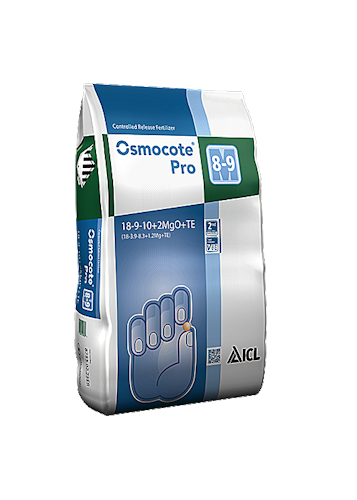
Controlled-Release Fertilizers (CRF), sometimes called slow-release fertilizers, are water-soluble fertilizers that are encapsulated in porous polymer coatings. Once the pellets absorb water, the fertilizer inside starts to dissolve and leak out of the pores in the coating.
The polymers are engineered to have specific thermal expansions and porosity, releasing more of the fertilizer as the soil is warmed and the pores expand. That is why you’ll see the CRF products being specified not only by formula, but with a release time correlated with temperature, as well.
One of the big questions that comes up related to CRF’s is “how much do I use?”. That question requires the mix of facts and – unfortunately – several assumptions. Let’s start with some facts:
- In order for any plant to gain one pound of mass, it must absorb and chemically process 5 grams of NPK fertilizer, and a good 95% of that is nitrogen.
- The labels of fertilizer specify the weight percentage of the ingredients in weight percent. That is true for both water-soluble and slow-release fertilizers.
- The rate of release in “controlled-release” fertilizers, as I mentioned above, is based upon the temperature.
So… Assumption 1: “The plant” we want to use the CRF on will take 5 years to gain one pound, so that means 1/60th pound per month – and that’s assuming a constant growth rate.
1/60th of a pound will require 1/60th of that 5 grams of fertilizer (for demo purposes, I’m assuming it’s all nitrogen). Therefore, the controlled release fertilizer will need to release 0.08333g per month. So far, so good.
The CRF I use on my bedding plants is specified to last 8-9 months at a soil temperature of 70°F or 6-7 months at 80°F. (In reality, that’s for 85% release, but again, for calculations, let’s’ say it’s 100%.) I’m reasonably confident that my bedding plants stay hot, so I’ll go with the 6 month lifespan for calculations. That means that one of my plants will need 6 x 0.08333 = 0.5g of nitrogen every 6 months.
As my CRF is 20%N, I now know that I must add 0.5/0.2=2.5g CRF to the container. Sounds great, right? Nope. More assumptions are needed.
Most potted terrestrial plants have fine, “hairy” roots that basically envelop the entire potful of soil. That means that they are likely to take up essentially all of the nutrient minerals released into the pot. Now think about orchids.
Orchid roots are more like a few “worms” in the pot and don’t extend throughout the volume, so they’re going to come in close proximity to a lot less of whatever is in the pot. Similarly, a decent orchid medium is full of voids so the plant’s gas exchange processes can function freely. No nutrition is being transferred to the plant’s roots though those voids.
So now the grower’s job is to estimate:
- The percentage of the pot that is filled with roots.
- The percentage of the pot is filled with solid media.
- Once the medium absorbs nutrients, how much is being channeled to the roots.
Once those are settled upon, it’s simple math to translate the calculated “2.5 grams needed” into the amount to add to the pot:
For example, if the roots occupy 33% of the pot, the medium occupies 75%, and it will wick 50% of the nutrients, then the amount of my 20% CRF needed will be:
2.5g x 3 (roots) x 1.33 (medium) x 2 (wicking) = roughly 20 grams.
Twenty grams of the CRF I have is about 4 teaspoons in volume, but we cannot forget that the estimates made above are just guesses.